You can’t walk straight up the hill. You have to walk the long path, past the plaques and statues, forced to take your time, you may not make the journey too quickly. Once at the first flank of the memorial, you can’t walk straight through. You have to wind your way and turn your shoulder sideways to get past the markers, which are actually bodies, large and iron. The names of those lynched marked on each.
When you get to the end of the first flank, you are forced to turn. You may not like what happens next. As you walk forward the ground begins to drop from beneath you. As you continue your descent the markers/bodies begin to lift, slowly at first, but soon they hover in the air around you, by death or resurrection, you do not know.
The third flank, the bodies are now above your head, hanging from the rafters. Here the signposts for your journey begin: “Seven black people lynched near Screamer, Alabama in 1888, for drinking from a white man’s well;” “Charlotte Harrison lynched in 1878 in Rockingham, VA after a white man’s barn burned down;” “Parks Banks lynched in Yazoo City, Mississippi in 1922 for carrying a picture of a white woman in his hat.” There is now no ambiguity about what you see above.
Turning to the fourth flank, you pause, for a plaque of remembrance, and then you turn and meet water. Water, a market of those not named, a further remembrance, a possible release, a cleansing, the indication of the possibility of movement. The bodies now far above your head, ascended into the sky.
EJI’s National Memorial for Peace and Justice was built just down from my old home in Montgomery, AL, on a street I walked most nights, talking with my neighbors, breathing the smells of trees and heat, listening to the stories of black folks on their porches. Up ‘til now I had always thought myself crazy, so did most others, a 23 year-old Harvard white boy who plopped himself down in Montgomery, AL for seven years. But now, speaking here with a fellow writer, all becomes clear. Montgomery is the crossroad of the United States, the belly of the beast, the Cradle of the Confederacy and the cauldron of the civil rights movement – it has a magnetic pull: from the bus boycotts, to freedom riders, to school desegregation, to decades of work for economic and racial justice. Standing with thousands of others pilgrims who have made the journey I see what I should have known all along: those who promote bigotry and hatred are the resistance, not us: they are the ones desperately fighting, while we are the ones journeying forward, slowly and at times in great darkness, but always moving. We are the movement, we are love, we are heart. I weep as I call and remember those only momentarily forgotten, finally home.

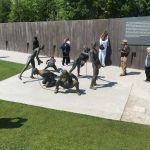
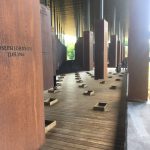
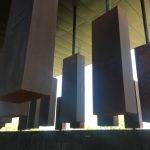
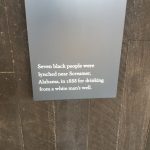
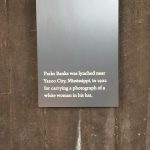
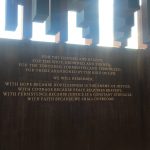
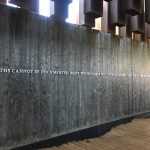
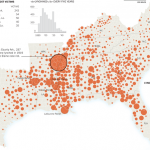
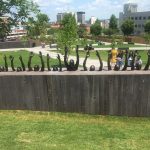
Alex, The National Memorial for Peace and Justice in Montgomery has been in the news this week, and I’ve been thinking of you returning to see this place for the first time. Thanks for the vivid description of the experience, and for the photographs — so massive and profound. x
Alex, thanks for writing a very fitting memorial to this new Memorial. If anyone could do it, I knew you could because of your wisdom, sensitivity, and way with words. I hope I get to experience this place some day. Blessings to you, friend.
A beautiful contribution to the “movement” and the “heart” you speak of. Such an inspiring reflection, thank you for that.
I’m sending this link to some friends I have in the area.